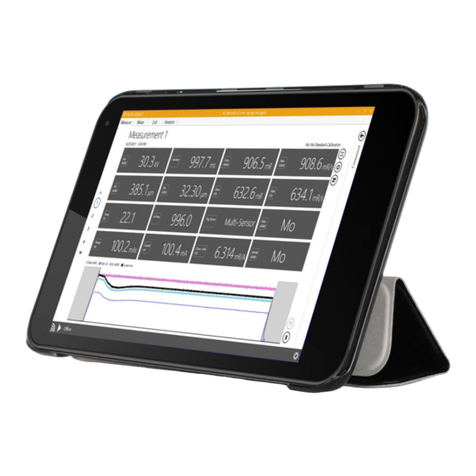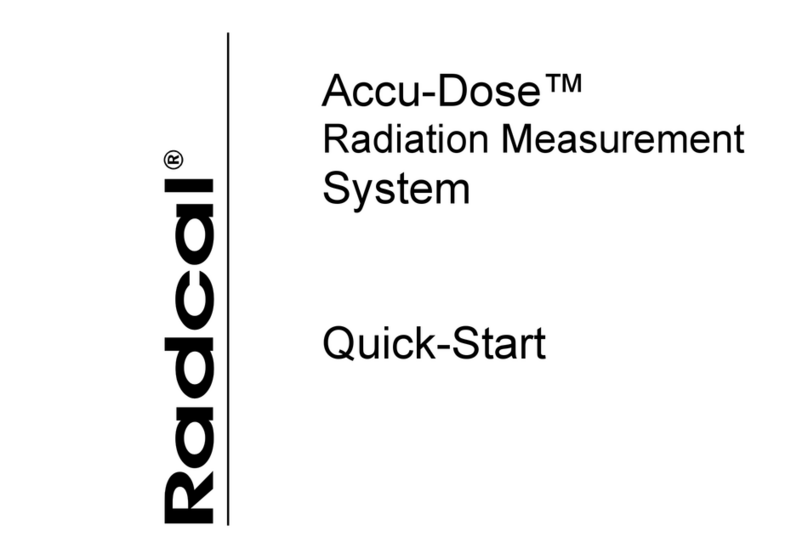
INTRODUCTION
The Accu-series instruments include the Accu-Pro™ for Dose and kV, the Accu-Dose for Dose only and
Accu-kV for kV only measurements. This manual is applicable to all instruments in the Accu-series.
The Accu-Pro™ system measures the characteristics of a diagnostic x-ray machine. Measurements are
processed and displayed by a microprocessor-based control unit. Sensors connect to the control unit via
a 4m cable that carries only digital signals and operating voltages to eliminate cable noise. Dose is
measured with ion chambers or solid-state detectors. Radcal Accu-kV sensors determine kV, filtration
and half-value measurements (diagnostic sensor) using differential absorption and an array of solid state
detectors. The mammographic (22-40kV) sensor Mo/Mo outputs can be corrected to W/Rh and W/Ag
anode-filter combinations (Hologic Selenia x-ray machine only).
A 13 kHz sample rate for kV measurements is used with FFT-based ripple measurements for accurate
kVp measurements on high-frequency generators.
Automatic compensation of kV measurements for filtration is available for diagnostic x-ray
measurements. This also provides estimates for filtration and half-value layer.
Stand-alone exposure measurements can be made using the Ion chamber digitizer and an ion chamber
or the dose diode digitizer and the DDX6-W or DDX6-M sensors. Using these sensors in conjunction with
the kV sensors provides dose and dose rate measurements synchronized to an x-ray pulse.
Using 40X11-W and DDX10-W or 40X10-M and DDX10-M sensors allows simultaneous dose and kV
waveform measurements
mA, mAs and mA waveform may be measured in conjunction with kV measurements using invasive or
non-invasive mA sensors.
The Accu-Pro™ operates from rechargeable NiMH or alkaline C cells.
The figure on page 46 shows the Accu-Pro™ system in its carry case.
A USB interface allows a PC to control and process measurements performed by the Accu-Pro™ system
. XLPRO, an Excel add-in, uses this capability to produce reports, graphs and to automate
measurements.
The figure on page 40 shows the pushbutton controls and the 2-line display. The connectors for the mA
sensor, USB and waveform are also visible. The battery charger interface is at the rear of the control unit.
The in-beam sensor connector is on the opposite side.
The controls include UP-arrow, DN-arrow and select pushbuttons that are used to navigate the menu
and to activate measurements. A test pushbutton provides a simulated x-ray signal so you can observe
how the measurements work. The power pushbutton provides for orderly shutdown and startup.
Measurement results are presented on the display and are available in digital form on using the USB
connection. The BNC provides calibrated real-time kV, dose or mA waveforms.
4































